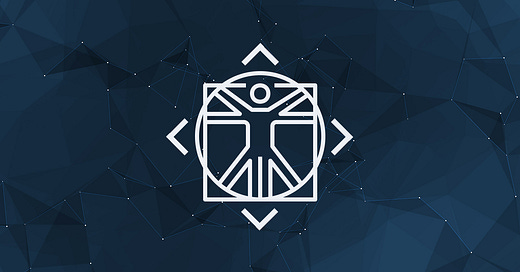Stargate Project is on - Sync #503
Plus: OpenAI Operator; Anthropic secured $1B from Google; Neuralink’s plans for 2025; Mistral AI is considering IPO; how Trump’s recent appointments might affect the longevity movement; and more!
Hello and welcome to Sync #503!
A lot has happened this week. The main news was the announcement of the Stargate Project, which we’ll examine closely, placing it in context and addressing whether Microsoft might indeed be the biggest loser here.
Stargate was not the only new thing OpenAI has announced this week. The company has also released Operator—its first AI agent that can control a web browser and perform tasks autonomously on behalf of the user. Additionally, OpenAI has created an AI model for longevity science, and rumours suggest that o3 mini might soon become publicly available.
Elsewhere in AI, Anthropic has secured an additional $1 billion from Google, Mistral AI is reportedly considering an IPO, and Google is forming a new team to build AI that can simulate the physical world.
Over in robotics, Amazon has paused its drone delivery programme following crashes during test flights in rainy weather. Humanoid robots are now learning to waltz and perform other complex moves by mirroring human actions. Meanwhile, UK retailers are increasingly adopting automation to reduce staffing costs.
Beyond that, we’ll explore Neuralink’s plans for 2025, how Trump’s recent appointments might affect the longevity movement, and why the UK government has turned to sci-fi writers to prepare for dystopian futures.
Enjoy!
Stargate Project is on
We first heard about Stargate in April 2024. At that time, it was a $100 billion plan by Microsoft and OpenAI to build a massive AI supercomputer to train the next generation of AI models and, eventually, develop AGI.
Now, Stargate is back, but this time with different people and under different circumstances.
Announced on Tuesday by President Trump, the new Stargate is a joint venture between OpenAI, SoftBank, Oracle, and MGX, along with several technology partners. The project aims to invest $500 billion in building new AI infrastructure in the United States. For the first phase of the project, $100 billion will be deployed immediately, as OpenAI writes in an announcement.
The initial equity funders in Stargate are SoftBank, OpenAI, Oracle, and MGX, an investment firm specializing in artificial intelligence technologies from Saudi Arabia. OpenAI and SoftBank are leading the project, with OpenAI overseeing the operational side and SoftBank managing the finances. The key initial technology partners are Arm, Microsoft, Nvidia, Oracle, and OpenAI. As part of Stargate, Oracle, Nvidia, and OpenAI will closely collaborate to build and operate this computing system. Masayoshi Son, the CEO of SoftBank, will serve as the chairman of this new enterprise.
Work is already underway to build the first AI data centre in Abilene, Texas, which Oracle has been constructing, with more planned. In its statement, OpenAI mentioned that it is evaluating potential sites across the country for additional campuses. Meanwhile, Larry Ellison, CEO of Oracle, stated that data centres are already under construction, with ten currently being built.
“This will be the most important project of this era,” said Altman, CEO of OpenAI.
Make American AI Great Again
While everyone’s attention is grabbed by big numbers and ambitious plans behind Stargate, let’s take a step back and examine the context surrounding the announcement.
First is the manner in which Stargate was announced—at the White House by President Trump, with Sam Altman, Larry Ellison, and Masayoshi Son standing beside him. This can be seen as an early political win for Trump in the area of technology and AI. Furthermore, all three CEOs credited Trump for helping to make the project possible, despite the fact that work on it had already begun and its origins date back to 2024. The announcement underscores the increasing influence of large technology companies in shaping the US AI infrastructure and policy.
The Stargate Project announcement came a week after OpenAI released its Economic Blueprint, in which the company compared the emerging AI industry to the automotive industry a century ago, calling on the US government to take decisive action to maintain US leadership in the AI.
Secondly, there are already reports that the project has started with a rocky start. According to The Information, the project does not have a fully developed plan and hasn’t secured funding yet. OpenAI and SoftBank will each commit roughly $19 billion to the project to start. They and Stargate’s other backers hope to raise the remaining $62 billion from existing investors and through debt.
Elon Musk, the head of President Donald Trump’s DOGE advisory commission and who is currently in a legal battle against Sam Altman and OpenAI over the company’s plans to transition to a for-profit business model, took to X to criticise the project, saying that “they don’t actually have the money”. Sam Altman denied these claims and called Musk to put aside his personal agenda and put America first.
Last but not least is how Stargate fits into a broader trend of building new AI infrastructure and the competition with China in AI.
Demand for AI-related data centres is surging, with global capacity expected to triple by 2030. The US leads global AI investment, with companies such as Microsoft, Amazon and Google having already committed billions to AI data centre development. Building such massive new AI and computing infrastructure is not an easy task.
One of the biggest challenges facing Stargate and similar projects is inadequate energy supply and an unreliable grid in the US. This is an area in which the US federal government can step in and make building new electricity plants, be it using fossil fuels, nuclear power or renewable sources, easier.
The project aligns with Trump's emphasis on keeping AI development and infrastructure within the United States and maintaining the US AI industry's global dominance. That alignment is also reflected in the language used to announce Stargate—a nationalistic, America-first kind of language. OpenAI’s announcement talks about securing American leadership in AI and creating hundreds of thousands of American jobs. It also talks about the re-industrialization of the United States and about providing a strategic capability to protect the national security of America and its allies. It seems OpenAI’s mission—”to ensure that artificial general intelligence benefits all of humanity”—had to be put aside for a moment.
I also want to remind that almost a year ago, the Wall Street Journal reported that Sam Altman was in talks with various investors to raise $7 trillion to reshape the global AI chip industry. Considering how critical the semiconductor and broader tech industries have become for national security in recent years, Stargate and its $500 billion investment plan might just be the beginning of a much larger wave of investments and transformation.
Is Microsoft the biggest loser? Or did it dodge a multibillion-dollar bullet?
One opinion I noticed while researching the topic of Stargate is that Microsoft is the biggest loser on this project. The argument to support that claim is that Microsoft is no longer OpenAI’s exclusive cloud provider and is not one of the leaders in the new Stargate project.
Alongside the Stargate announcement, Microsoft published a post briefly detailing the details of the new relationship with OpenAI. According to Microsoft, both companies have a contract that will remain in place through 2030. Microsoft will still have access to OpenAI’s models to use in its products and services, as well as offer them through Azure. However, the new agreement gives Microsoft a right of first refusal. A right of first refusal is a contractual arrangement granting one party the first opportunity to accept or reject a deal before others are considered. In the context of the new OpenAI-Microsoft agreement, this means Microsoft has the exclusive first choice to host OpenAI's AI workloads in its cloud, but if Microsoft cannot meet OpenAI's needs, OpenAI is free to seek services from other cloud providers. Seeing that Oracle is one of the companies leading Stargate, I think it is likely that Oracle will be the next company OpenAI would turn to for cloud services if Microsoft’s offer were rejected.
What we see here is likely a sign of a rift between OpenAI and Microsoft. I will elaborate on that idea in a separate post, but it is likely that OpenAI and Microsoft, once close partners, will soon become competitors in the AI space. OpenAI has grown too big, too fast for Microsoft to fully control what has become the hottest tech company of this decade so far. Meanwhile, OpenAI and Sam Altman seem to have bigger ambitions than merely becoming Microsoft’s equivalent of DeepMind, fully owned and controlled by Microsoft. These two announcements—one from OpenAI and one from Microsoft—reassure us that the partnership between these two companies is still in place. However, they also create some distance between the two companies.
It is also worth noting that the first iteration of Stargate, which leaked to the press in April 2024, was supposed to be a project between OpenAI and Microsoft only. In that version of Stargate, which in some ways is similar to the new Stargate project, the plan was to build a $100 billion supercomputer exclusively for OpenAI to train models that could be considered AGI. It is fair to assume that Microsoft would put most of the $100 billion bill for that AI supercomputer, probably without seeing much in return. If that is the case, Microsoft, recognising that OpenAI was transitioning from a partner to a competitor, may have decided to step away from the project, ultimately saving itself billions of dollars.
Regardless of whether Microsoft is the biggest loser of the Stargate Project or if it just dodged a multibillion-dollar bullet, one thing is certain—Nvidia will deliver thousands of its state-of-the-art AI chips, reaping millions upon millions in the process.
If you enjoy this post, please click the ❤️ button or share it.
Do you like my work? Consider becoming a paying subscriber to support it
For those who prefer to make a one-off donation, you can 'buy me a coffee' via Ko-fi. Every coffee bought is a generous support towards the work put into this newsletter.
Your support, in any form, is deeply appreciated and goes a long way in keeping this newsletter alive and thriving.
🦾 More than a human
What to expect from Neuralink in 2025
2025 is shaping up to be another busy year for Neuralink. First, the company is expected to conduct more human trials. While Elon Musk aims for 20 to 30 patients this year, this article suggests a more realistic scenario in which Neuralink completes at least two more implants by the end of 2025 and eight by the end of 2026. New versions of Neuralink’s brain-computer interface are also anticipated, promising improved control and expanded capabilities, such as operating robotic arms. Additionally, the company is developing a vision implant called Blindsight, though trials for this technology are unlikely to occur this year. Neuralink is also expected to face continued scrutiny from news outlets, animal-rights advocates, and fraud investigators at the Securities and Exchange Commission.
Make America Ageless: Trump’s Health Picks Take Longevity Movement Mainstream
Longevity enthusiasts are hopeful about Trump’s second presidency, as the new administration is seen as potentially supportive of anti-ageing research and development. Key health appointees, including Robert F. Kennedy Jr. (Donald Trump’s nominee to lead the Department of Health and Human Services) and Marty Makary (a candidate to lead the FDA), have ties to the longevity industry or advocate for anti-ageing practices. Advocates hope for faster drug approvals, expanded research funding, and recognition of ageing as a treatable condition. With government backing, the longevity field could experience accelerated innovation, faster market introduction of treatments, and expanded preventive care measures to enhance healthy lifespans.
Artificial touch: Brain-controlled bionic hand now senses edges and motion
Researchers have developed a method to convey complex touch sensations through brain stimulation, enabling individuals with spinal cord injuries to experience tactile feedback while using a bionic limb. By employing implantable electrodes to encode natural touch sensations and delivering "tactile messages" via microstimulation directly to the brain, users can perceive detailed sensations such as edges, motion, and curvatures. The bionic arm’s sensors relay this information to the brain, making the experience feel natural and significantly improving the dexterity and usability of prosthetic limbs.
🧠 Artificial Intelligence
OpenAI has launched its first agent, named Operator. Operator is an AI agent that can control a web browser and can perform tasks autonomously on behalf of the user. The new product is currently available only to Pro subscribers in the US, with plans to expand the access to Operator to other regions and to bring Operator to the ChatGPT Plus plan. Operator is currently in the research preview stage, and OpenAI has admitted it may struggle with complex interfaces such as slideshows or calendars. In the video above, Sam Altman mentioned that more agents will be released in the coming weeks and months.
Anthropic reportedly secures an additional $1B from Google
The Financial Times reports that Anthropic has secured $1 billion in funding from Google, increasing Google’s total stake in the company to approximately $3 billion. To date, Anthropic has raised $14.7 billion, including $8 billion from Amazon, and is currently seeking to raise up to $2 billion from investors such as Lightspeed at a valuation of $60 billion.
Buzzy French AI startup Mistral isn't for sale and plans to IPO, its CEO says
Mistral, one of Europe's top AI startups, plans to pursue an initial public offering (IPO) rather than being acquired, said CEO Arthur Mensch during an interview at the World Economic Forum in Davos. The two-year-old startup, which has secured over €1 billion (over $1.05 billion) in funding, is known for its popular open-source models, Mistral and Mixtral, as well as its closed model, Le Chat, which the company claims are faster than competitors.
Google is forming a new team to build AI that can simulate the physical world
Google DeepMind is forming a new team led by Tim Brooks, formerly co-lead of OpenAI's video generator Sora, focusing on developing world models—massive generative models capable of simulating the world. The team will build on Google's Gemini (AI for text/image analysis), Veo (video generation), and Genie (real-time 3D environment simulation). Potential applications of world models include video games, movies, robotics training, visual reasoning, and planning for embodied agents. Some even see these models as a path towards AGI.
OpenAI finalizes 'o3 mini' reasoning AI model version, to launch it soon
OpenAI has finalised the final version of the o3 Mini, the smaller model in its o3 line of reasoning models, and plans to launch it in a few weeks, according to Sam Altman. The new o3 and o3 Mini models are expected to set a new level of performance for AI performance.
OpenAI’s AI reasoning model ‘thinks’ in Chinese sometimes and no one really knows why
Shortly after OpenAI released o1, people started to notice that OpenAI’s first reasoning model sometimes processes steps in languages other than English (e.g., Chinese, Persian), even when asked questions in English. Experts suggest that o1’s multilingual behaviour might be a result of training the model on datasets with significant Chinese character content. Others suggest that the model doesn’t inherently differentiate between languages, instead selecting one based on task efficiency. For instance, Chinese might be preferred for mathematical tasks due to its brevity in digit representation.
Some lessons from the OpenAI-FrontierMath debacle
When OpenAI announced o3, the latest model in its o-series of reasoning models, one benchmark result that stood out was its performance on FrontierMath. Previous models scored only 2% on this benchmark, which consists of challenging, unseen math problems, while o3 achieved an impressive 25%. However, it was recently revealed that EpochAI, the organisation behind the benchmark, received funding from OpenAI. This has raised concerns about potential bias and benchmark manipulation, sparking broader discussions about the future of AI benchmarks and the need for transparent, impartial methods to evaluate AI models.
Coming soon: Ph.D.-level super-agents
A major AI company, possibly OpenAI, is expected to announce a breakthrough enabling AI "super-agents" capable of performing complex, PhD-level tasks, writes Axios in this article. It further explains how the rise of super-agents could lead to a world where AI performs complex tasks with precision and efficiency, raising questions about the future of human labour and ethical considerations in AI development.
Replit CEO on AI breakthroughs: ‘We don’t care about professional coders anymore’
Replit’s CEO, Amjad Masad, believes that with tools like Replit’s Agent, anyone can create software without spending months learning to code. Launched in September last year, Agent handles the complexities of coding, deployment, and integration, enabling users without coding experience to build software using simple text prompts. Masad compares the era of AI coding tools to the democratisation of computers with graphical user interfaces, signalling a major shift in how software is created and used.
▶️ Stanford AI Expert caught using AI in Court (Kohls v. Ellison) (22:43)
Here is another reminder to check what your AI assistant of choice is generating. In this video, Leonard French analyses a case in which an expert on deepfakes and AI-created misinformation has been caught with fake AI-generated citations in his declaration to the court. Unsurprisingly, the judge was displeased with the situation and essentially roasted the AI expert in the rebuke.
If you're enjoying the insights and perspectives shared in the Humanity Redefined newsletter, why not spread the word?
🤖 Robotics
Amazon Pauses Drone Delivery After Aircraft Crashed in Rain
Amazon has suspended Amazon Air, its commercial drone delivery service, in Texas and Arizona following crashes of the MK30 drones during test flights in rainy weather. The crashes, including one that caught fire on the ground, revealed a software issue related to light rain. The company has faced a history of incidents, including five crashes in 2021 and four in 2022, prompting federal investigations and increased scrutiny of safety protocols. Despite these setbacks, Amazon continues to refine its drone delivery programme as part of its long-term strategy to revolutionise package delivery.
Robots, drones and uncrewed vessels ‘likely to be default’ in future Royal Navy
The Royal Navy sees its future in more robots and drones. Admiral Sir Ben Key, the First Sea Lord, emphasises the need to prioritise recruitment and retention over increasing personnel numbers, as crew sizes are inevitably shrinking with the evolution of military technology. Although fully automated warships are still a distant dream, the future is expected to feature hybrid fleets combining crewed and uncrewed systems, with uncrewed vessels likely becoming the standard. The effectiveness of uncrewed sea drones, demonstrated by Ukraine against Russia’s Black Sea fleet, highlights the strategic potential of drones and robots in modern naval warfare.
Humanoid robot learns to waltz by mirroring people's movements
Researchers present ExBody 2—an AI designed to help humanoid robots learn complex movements by mirroring human actions. The AI was trained using reinforcement learning on a database of motion capture recordings from hundreds of human volunteers performing a wide range of movements, from basic actions like walking to complex movements such as dance routines and fighting techniques. After being installed on two commercial humanoid robots, ExBody successfully performed simple movements like walking and crouching, as well as more complex actions, including waltzing, advanced dance moves, and throwing punches.
Use of robotic hand exoskeleton helps pianists improve their playing speed
Can an exoskeleton hand make someone a better pianist? According to researchers from Japan, the answer is yes. Over 100 trained pianists were invited to participate in a study, which first asked them to practice pieces until they reached their individual plateau levels. The exoskeleton was then attached to their hands to conduct what researchers called passive training, during which the device controlled the fingers on their right hand, moving them up and down in various patterns and at different speeds. The results showed improved player performance, allowing pianists to surpass their previous plateau, especially for playing faster. Researchers also found improvements in both hands despite training only one.
Robot packers and AI cameras: UK retail embraces automation to cut staff costs
This article highlights how rising labour costs, including increases in the national minimum wage and employers’ national insurance contributions, are driving UK retailers to adopt automation, robotics, and AI in their operations. Examples include electronic shelf price labels, self-service options such as automated returns machines and unstaffed shops like Amazon Go, warehouse automation, and AI-powered solutions to optimise various aspects of their businesses.
▶️ Why Are Scientists Making Robot Insects? (21:15)
In this video, Veritasium explores the fascinating world of microbotics and visits a couple of labs working on robot insects to learn how researchers address unique challenges specific to the micro-scale, such as dealing with water tension, enabling these tiny robots to fly, and developing methods to power and control their movements, including piezoelectric crystals, flexible self-healing polymers, and even miniature combustion engines.
🧬 Biotechnology
OpenAI has created an AI model for longevity science
OpenAI has announced its first AI model for scientific research. This model, named GPT-4b Micro, was designed to assist in protein engineering, with a focus on re-engineering Yamanaka factors—proteins that transform skin cells into stem cells. OpenAI’s model produced redesigned factors that were over 50 times more effective in preliminary measures. The project was carried out in partnership with Retro Biosciences, a company in which Sam Altman has personally invested $180 million, aiming to extend human lifespans by 10 years through research on Yamanaka factors. While the results are promising, they remain preliminary and unpublished, and require independent verification. Furthermore, the model is not yet publicly available, and its future deployment as a standalone product or integration with OpenAI’s reasoning models has yet to be decided.
The first ‘human domainome’ reveals the cause of a multitude of diseases
A team of researchers has created the "Human Domainome 1," cataloguing 563,000 mutations across 400 human protein types. Using this domainome, researchers discovered that 60% of the mutations in the catalogue reduce protein stability, a key factor in disease mechanisms. “If we are able to understand all these mechanisms, we’ll be able to tailor the best possible treatment for each patient based on their specific mutation,” said Antoni Beltran, a scientist involved in the project and the lead author of the paper describing it, highlighting the potential of their work to advance the field of personalized medicine significantly.
💡Tangents
UK Ministry of Defence enlists sci-fi writers to prepare for dystopian futures
Recently, the UK Ministry of Defence invited sci-fi writers to assist in preparing for future crises such as pandemics, cyber-attacks, and resource shortages. This is not the first time governments have collaborated with sci-fi authors to envision potential future scenarios. The unique skill set and imagination that writers bring to the table can help uncover possibilities overlooked by others and explore how people might react to various future situations. Plans are underway to publish a collection of stories from the project to stimulate broader discussions.
Thanks for reading. If you enjoyed this post, please click the ❤️ button or share it.
Humanity Redefined sheds light on the bleeding edge of technology and how advancements in AI, robotics, and biotech can usher in abundance, expand humanity's horizons, and redefine what it means to be human.
A big thank you to my paid subscribers, to my Patrons: whmr, Florian, dux, Eric, Preppikoma and Andrew, and to everyone who supports my work on Ko-Fi. Thank you for the support!
My DMs are open to all subscribers. Feel free to drop me a message, share feedback, or just say "hi!"










